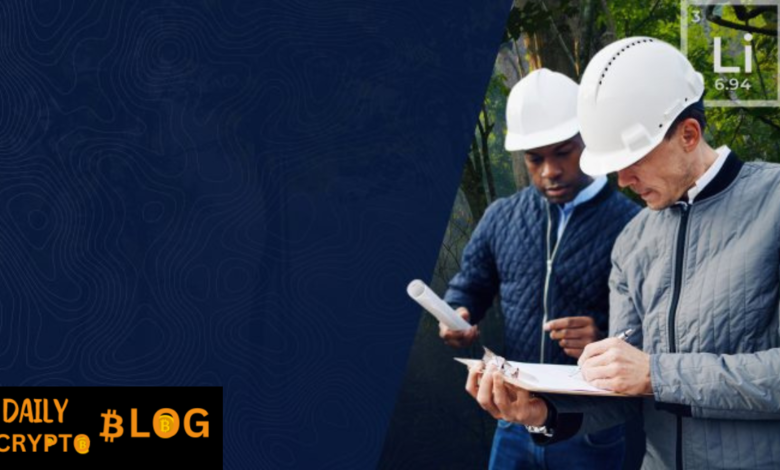Lithium Refining Business: A Comprehensive Guide to the Booming Industry

Introduction
Lithium is a lithium refining crucial element that has become indispensable in modern technology, particularly in energy storage and electric vehicles (EVs). The demand for lithium has surged due to the global transition toward sustainable energy solutions. As lithium-ion batteries power everything from smartphones to electric cars, the need for a steady and refined supply of lithium continues to grow.
The lithium refining business plays a pivotal role in ensuring that raw lithium is converted into a usable form, such as lithium carbonate or lithium hydroxide, which are essential for battery production. With governments worldwide promoting clean energy initiatives, the industry is experiencing rapid expansion. Understanding the lithium refining process, market dynamics, and business opportunities is essential for investors, entrepreneurs, and industry stakeholders.
This article provides an in-depth exploration of the lithium refining business, covering extraction techniques, market trends, challenges, and investment opportunities. Whether you are considering entering this lucrative industry or simply want to stay informed about its latest developments, this guide will equip you with valuable insights.
The Lithium Refining Process
Sources of Lithium
Lithium is primarily extracted from two sources: hard rock mining and brine deposits. Hard rock lithium mining, particularly from spodumene ore, is widely practiced in Australia and Canada. This method involves crushing and processing lithium-bearing rocks to extract lithium concentrates.
Brine extraction, on the other hand, is dominant in South America, particularly in the lithium triangle (Chile, Argentina, and Bolivia). This method involves pumping lithium-rich brine to the surface, where it undergoes evaporation to concentrate the lithium. Emerging sources, such as lithium extraction from geothermal brines and clay deposits, are gaining attention due to their potential sustainability and efficiency.
Key Refining Techniques
Once lithium is extracted, it undergoes refining to enhance purity. Key refining techniques include acid leaching, sulfate roasting, and direct lithium extraction (DLE). Acid leaching involves using sulfuric acid to dissolve lithium from ore, while sulfate roasting is a high-temperature process that converts lithium minerals into lithium sulfate for further processing.
DLE is an innovative technology that aims to extract lithium directly from brine without traditional evaporation ponds, reducing water consumption and processing time. This method is being explored as a more sustainable approach to lithium refining.
Stages of Lithium Refining
Lithium refining involves multiple stages, beginning with the extraction of lithium from its source, followed by chemical conversion into lithium carbonate or lithium hydroxide. These refined products are then purified to meet industry standards. High-purity lithium is essential for battery-grade applications, necessitating stringent quality control processes.
Market Trends and Growth Potential
Increasing Global Demand
The demand for lithium is expected to grow exponentially, driven primarily by the expansion of the EV market. Leading automakers are investing billions in battery production, increasing the need for refined lithium. Additionally, lithium plays a crucial role in renewable energy storage, making it a cornerstone of the green energy transition.
Key Players in the Industry
Major companies leading lithium refining include Albemarle, SQM, Livent, and Ganfeng Lithium. These firms control significant portions of the global lithium supply chain. Additionally, new startups are entering the market with innovative refining technologies to improve efficiency and sustainability.
Geographical Hotspots for Lithium Refining
Lithium refining operations are concentrated in China, Australia, and South America. China dominates lithium refining, accounting for a substantial percentage of the world’s lithium hydroxide production. However, the United States and Europe are ramping up efforts to establish their own refining facilities to reduce reliance on imports.
Challenges and Opportunities in the Lithium Refining Business
Environmental Concerns and Sustainability
Lithium refining poses environmental challenges, particularly water usage and carbon emissions. Brine extraction can deplete local water sources, affecting surrounding ecosystems. The industry is working on developing greener refining methods, such as low-energy DLE and lithium recycling, to mitigate environmental impacts.
Regulatory and Compliance Issues
Governments worldwide are implementing stricter regulations to ensure sustainable lithium mining and refining. Companies must comply with environmental standards, secure permits, and navigate complex trade policies. Adapting to these regulations is crucial for long-term success in the industry.
Investment and Profitability
The lithium refining business requires significant capital investment, but the potential returns are substantial. As lithium prices remain high due to increasing demand, businesses can achieve profitability with efficient operations. Strategic partnerships with battery manufacturers and automakers can further enhance revenue potential.
Technological Innovations
Innovation is shaping the future of lithium refining. Researchers are exploring more efficient extraction methods and recycling technologies to recover lithium from used batteries. Advancements in automation and AI-driven refining processes are also improving productivity and reducing costs.
How to Start a Lithium Refining Business
Initial Steps and Requirements
Starting a lithium refining business requires thorough research and planning. Entrepreneurs must conduct feasibility studies, analyze market demand, and understand regulatory requirements. Securing necessary licenses and permits is a critical step before establishing operations.
Setting Up Refining Facilities
Building a lithium refining facility involves significant investment in infrastructure and equipment. The location should be strategically chosen to ensure proximity to lithium sources and transportation networks. Hiring skilled professionals and technicians is also essential for efficient operations.
Finding Suppliers and Customers
A successful refining business depends on securing reliable suppliers for raw lithium and establishing partnerships with battery manufacturers. Long-term supply agreements with EV makers can provide financial stability and growth opportunities.
Cost Analysis and Funding Options
The initial investment for a lithium refining facility can range from millions to billions of dollars. Funding options include venture capital, government grants, and partnerships with industry leaders. Careful financial planning is essential to ensure sustainable growth.
Conclusion
The lithium refining business is at the heart of the energy revolution. As demand for lithium-ion batteries continues to surge, refining operations must scale up to meet global needs. While challenges such as environmental concerns and regulatory hurdles persist, advancements in technology and sustainability initiatives are shaping the future of lithium refining.
For investors and entrepreneurs, the lithium refining industry presents a lucrative opportunity. By leveraging innovation, sustainability, and strategic partnerships, businesses can thrive in this fast-growing sector and contribute to the world’s transition toward clean energy.

